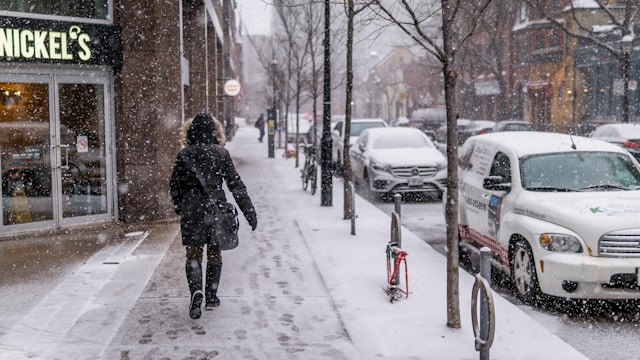
As winter blankets the city of Toronto in snow and ice, residents face the familiar hazards of slippery sidewalks and pathways. While slip and fall accidents are often considered an inevitable consequence of winter weather, there are proactive steps that individuals can take to help prevent these incidents and ensure safer conditions for everyone. One such crucial step is reporting icy conditions to the City of Toronto promptly. Here’s a guide on how to do just that:
- Identify Hazardous Areas: Keep an eye out for areas prone to icy conditions, such as sidewalks, pedestrian crossings, and bus stops. Pay attention to locations where water tends to accumulate or where there is inadequate drainage, as these areas are more likely to freeze and create slippery surfaces.
- Document the Hazard: If you encounter icy conditions while out and about, take note of the specific location and the severity of the hazard. Use your smartphone or camera to take photographs or videos of the icy surface, making sure to capture any potential dangers.
- Note Relevant Details: Record the date, time, and precise location of the icy conditions. Provide as much detail as possible about the extent of the hazard and any potential risks it poses to pedestrians, including seniors, children, and individuals with mobility impairments.
- Report to 311: The City of Toronto’s 311 service is the primary channel for reporting non-emergency issues, including icy conditions on public property. You can report icy sidewalks, roads, and other hazards by dialing 311 from within Toronto or submitting a report online through the city’s website.
- Provide Specific Information: When reporting icy conditions to 311, be sure to provide accurate and detailed information about the location and nature of the hazard. Describe the extent of the ice accumulation, whether it covers the entire sidewalk or is localized to certain areas, and any contributing factors such as inadequate snow removal or drainage issues.
- Follow Up: After reporting icy conditions to 311, follow up on your report to ensure that appropriate action is taken by city authorities. If the hazard persists or if you notice that no action has been taken, consider contacting your local city councillor or community representative for further assistance.
- Encourage Community Engagement: Encourage your neighbors and fellow residents to also report icy conditions to the City of Toronto. Collective action and community engagement can help amplify efforts to address hazardous conditions and improve safety for all residents.
- Practice Personal Safety: While reporting icy conditions is essential for community safety, it’s also crucial to take personal precautions to avoid slip and fall accidents. Wear appropriate footwear with good traction, walk slowly and carefully on icy surfaces, and use handrails or support if available.
- Stay Informed: Stay informed about snow clearing and ice removal efforts in your neighborhood by following updates from the City of Toronto’s official channels, including social media accounts and website announcements. Knowing when and where city crews are working can help you anticipate improvements in road and sidewalk conditions.
- Advocate for Systemic Improvements: In addition to reporting individual incidents of icy conditions, advocate for systemic improvements to winter maintenance practices in your neighborhood and across Toronto. Engage with local community groups, attend public meetings, and communicate with city officials to advocate for policies and investments that prioritize pedestrian safety during the winter months.
By taking proactive steps to report icy conditions to the City of Toronto, residents can contribute to efforts to prevent slip and fall accidents and create safer, more walkable communities for everyone. Together, we can make a difference in reducing winter-related injuries and ensuring that Toronto remains a vibrant and accessible city year-round.
